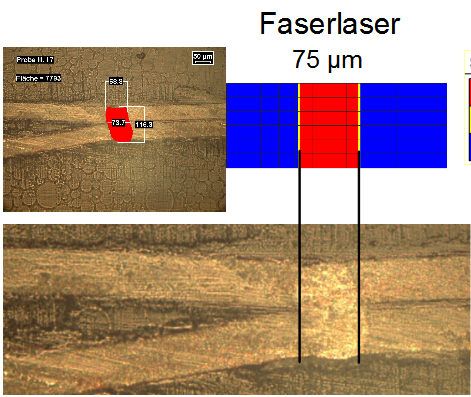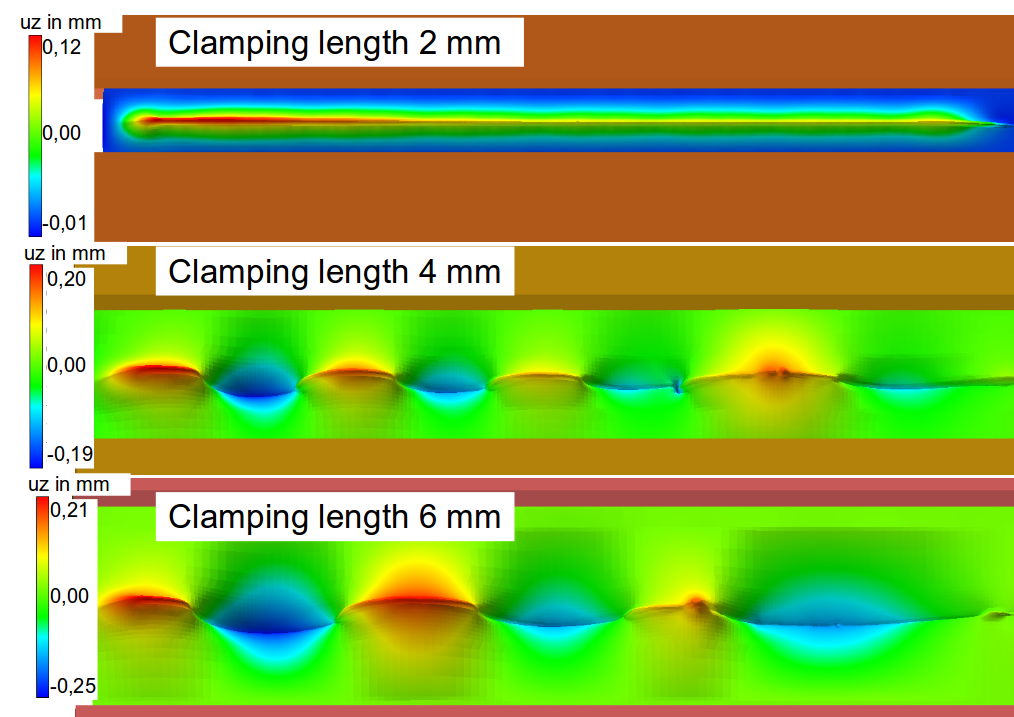
Development of a new, mechanical resistant vacuum isolation panel with wide range of use for high performance application by utilisation of CrNi-steel wrapper
Performed by engineering office Tobias Loose
The engineering office Tobias Loose has executed with in the CroNi-VIP project the following subproject:
Welding structure analysis of the welding of foils of vacuum isolation panels
Project partners:
The project was foundet by the AIF Projekt GmbH, ZIM - Kooperationsprojekte, Tschalkowskistraße 49, D-13156 Berlin with in the support programme Zentrales Innovationsprogramm Mittelstand of the Bundesministeriums für Wirtschaft und Energie (BMWi) - Fördermodul FuE-Kooperationsprojekte Support code: VP3018201AG2
Publications
Loose, T. ; Patschger, A. ; Bliedtner, J. :
Simulation-aided Optimization of a Laser-based Micro-welding Process In: Proceedings of the IWOTE´14: International Workshop on Thermal Forming and Welding Distortion, S. 141-158, Bremen 09.-10.04.2014
[read the paper]
Patschger, A. ; Loose, T. ; Bliedtner, J. : Simulationsgestützte Prozeßoptimierung eines laserbasierten Mikroschweißverfahrens. In: Simulationsforum 2013 Schweißen und Wärmebehandlung, Tagungsband, S. 201 - 213, Weimar 15.- 17.10.2013
Simulation example from the reseach project:
Comparison of the distortion at different clamp distance of the foil:

In a research project with the purpose of resulting in an industrial application, a vacuum insulation panel is to be sealed using ultrathin CrNi steel foils. A laser beam joining process is applied to achieve the vacuum-tight sealing of the panel. In this context, laser-based micro-welding requires excellent process control due to the small material thicknesses of ≤ 50 µm. So as to reliably weld the join partners to each other in the form of a lap joint, the process parameters need to be optimized.
The energy transported by the laser beam is partially absorbed and converted into heat. Hence, losses occur due to heat conduction into the component that are drawn from the actual process. The minimum material thickness of the steel foil, the process-related clamping length and the immanent compliance of the clamping means result in a reduced structural rigidity of the overall system that can absorb only small compressive stresses. While the component cools down, internal compressive stresses occur, causing the foils to buckle. The thermally induced distortion results in the formation of gaps between the join partners.
As heat conduction losses increase, distortion grows as well, and so does the joining gap, which causes the process to be interrupted. This implies an immediate impact on the joining process that is highly sensitive to vertical relative displacements of the foils. Hence, heat conduction losses and the associated distortion must be minimized.
The Péclet number is a measure of the relative portion of heat conduction losses in the laser-based machining process and is thus interrelated to thermal efficiency. The selected process parameters determine the Péclet number which is why they are critical when it comes to process reliability and joinability.
In order to qualify the impact, the process parameters are varied, and process efficiency is analyzed in dependence on the Péclet number. Experimental analysis is complemented by welding simulation enabling the calculation of global temperature field, internal stresses and distortion in dependence on the Péclet number and of the clamping length. The combination of experimental analysis and welding simulation is to help design a robust micro-joining process.
The component geometries used constitute a particular challenge in terms of the simulation. Based on the temperature field calculation, the heat introduction into the component can be derived, and the heated zone can be estimated. Both is crucial when it comes to the formation of distortions.
In order to ensure a reliable production process, disturbances such as gap formation due to thermal deformation must be minimized.
The distortion is caused by internal strains. It develops when the material is heated up during welding. Certain areas within the heat-affected zone are made subject to thermal strain and give way normal to the foil plane.
The width of the heat-affected zone scales with the Péclet number. The higher the Péclet number, the smaller the heat-affected zone.
Thermal efficiency, i.e. the relationship of the energy introduced to melt the material in the area of the weld metal to the overall energy introduced into the component, scales with the Péclet number as well. The higher the Péclet number, the greater the thermal efficiency.
The degree of clamping, i.e. the free length between the clamps, also has a direct influence on distortion. The greater the degree of clamping, the greater the distortion. Moreover, the clamping length also has a certain, albeit minor, impact on thermal efficiency. The greater the clamping length, the greater the thermal efficiency.
Two different forms of distortion can develop: Linear yielding or checkered buckling. The number of buckling waves per weld seam length depends on the clamping length. The greater the clamping length, the less buckling waves per unit length.
The transition of the distortion pattern from checkered buckling to linear yielding depends on a critical Péclet number that needs to be exceeded, a critical clamping length that needs to be undercut, or a critical foil thickness that needs to be exceeded. In this context, these three parameters are interdependent.
In order to design a reliable process, the distortion that develops in the course of welding must be minimized. This can be achieved when:
- the greatest possible Péclet number is achieved.
- the clamping length is minimized.
© Dr. Loose GmbH, alle Rechte vorbehalten | Impressum | Datenschutz | Rechtliche Hinweise